Lots of companies are good at reinforcing the necessity of their products (posted from my iPhone). But only Disney can discover the craziest niche markets and then sell the heck out of it to a captive audience.
It seems to have exploded in the last 15 years. Weird stuff that nobody ever thought worthy of selling in a theme park. But not only did Disney sell it, they figured out a way to make it pervasive. Many of these things are not only part of the normal Disney experience, but even the competitors are copying them.
And it all began with…
1. Pin Trading
As collectible niche markets go, little custom pins do not seem all that lucrative. Pins serve no practical purpose. You buy it for the design and for their function as a small memento of your vacation and to assuage that strange human desire to “collect them all.”
Yet somehow Disney took this little keepsake and rocketed it into a mainstream tourist must-have. They did it with something called a lanyard.
“Lanyard” was not even in my vocabulary in the late 90s, maybe because I wasn’t going to a lot of sales conferences at that stage of my career. The first time I saw one, I thought it was a camera strap. (kids, a “camera strap” is a lanyard that used to carry an expensive and bulky photo-taking piece of equipment during the Babylonian empire). Disney started tacking these collectible pins to these straps and allowing Cast Members and guests alike to wear them around their neck for display — like Flava Flav, only without any useful time management devices.
With the pins now fully on display, they next set up entire tents where guests could interact and trade them. A constitutional amendment was enacted, requiring Cast Members to perform any trade asked of them, setting the Cast Member Rights movement back several years.
Disney started offering “limited” editions of some pins. Suddenly the commonplace art of buying stuff at a theme park turned into some sort of Mel Brooks mad-cap adventure, with guests competing for the select few of each new design, which seem to get introduced every 2.6 seconds.
I honestly thought the pin trading craze would wear off in a year or two, as soon as people figured out just how much money was being spent. But the industry is bigger than ever. I recall overhearing some collector at one of the trading stations (who carried all his pins in a matching 5-piece luggage set, with a few hundred left over for a chain mail vest). He was telling another guest that these pins represented his retirement portfolio. Knowing my completist personality, I’m fortunate I never got sucked into the craze myself.
2. Candy Apples
Okay, so this niche market isn’t as lucrative as the pin trading. For one thing, you can’t trade apples, because they turn brown too quickly. And if you stick too many on a lanyard, you just end up looking like you’re trying to ward off vampires. But there was a time when if your name wasn’t Snow White, Disney apples came in 2 flavors: Candy Apple Red and Carmel.
These days, if you’re eating a plain candy apple, you are identifying yourself as a member of a bygone American society that still churns butter and rides horse buggies.
Apple confections are everywhere now, from Mike Wazowski eyeballs to sugar-coated mouse undershorts. They’ve got marshmallows glued on in the shape of ears. Some half dipped in chocolate, half in butter, half in bacon grease (150% coverage!). A few of them have been merged with so many different unhealthy substances, they’re now honorary members of the Belushi family. The apple is just a frame to hold the candy-sugarfat masterpiece on. If you eat one of these things a day, the doctor isn’t going to stay away. He’s going to personally back the ambulance into your driveway.
3. Ear Hats
Like the apples, the traditional Disney mouse ears came in two flavors: Plain black, and Plain black with your name stitched on the back. They had a simple — dare I say elegant — design. Now they have so many different mouse hats, with so much other superfluous decorations stuck on them, you’d think they were iconic pieces of architecture.
Mouse hats are not just for mice anymore. Every major character has one. Mater, Dumbo, Goofy, Lightning, R2-D2. There are mouse hats with princess tiaras, mouse hats in the style of World Showcase pavilions, mouse ears that are actually rabbit ears from a character Walt once drew for a few months in the 1920s . Kids today are no longer content with a simple Mouseketeer logo and chin strap. Now we need a Peter Pan feather, a duck bill, and some blinky LED lights to make sure we don’t feel ridiculous.
Even crazier, Disney has now started introducing souvenir miniature mouse hats, for when you want the mouse hat experience, but don’t want to cave to the societal pressures of wearing them on your head — or if you just have a really sick desire to humiliate your pet.
4. Character Greeting Areas
This niche market isn’t something directly monetized, but to old timers like me, it’s almost inconceivable that today’s guests view the character experience as on par or even more important than hitting major attractions like Space Mountain, Big Thunder, or the Swiss Family Treehouse (hey, I can dream). Characters were part of the background scenery in the early days of the park, a bit of spice to season the mixture.
The idea of a cordoned-off themed location with a proper queue and FastPass for a character meet-and-greet would have been crazy talk in 1985. But when princesses can command 60-minute wait times and entire buildings in Adventureland have been taken over by young women in fairy costumes, the old-fashioned rides and attractions are starting to take a back seat.
As a sign of the changing times, look no further than New Fantasyland. When it was first presented to the public, it did have a new Ariel ride, but the overwhelming majority of the land was taken up by acres of princess greeting areas. Snow White’s cottage, Sleeping Beauty’s cottage, Cinderella’s Chateau, Belle’s cottage (for princesses, they seem to spend a lot of time in log cabins). They eventually axed most of the cottages, replacing them with a rollercoaster so that somebody who wasn’t an 8-year-old girl would have something to do. But the characters didn’t go away. They just moved into Snow White’s original cottage.
Look at all the Disney marketing of the day. Along with the obligatory shots of spinning teacups and expertly photographed fireworks, it’s almost non-stop images of children running hand-in-hand with Woody and Buzz, teasing Chip and Dale, dancing with Sleeping Beauty.
The character craze shows no sign of abating. Turns out live mermaids are infinitely cheaper than building a replica of Mount Everest. They’ll sell blank books of stationary in the gift shop for those autograph hounds who love the thrill of getting a celebrity signature, but without the hassle of actually finding a celebrity.
And then, because Disney wants to see just how far the average consumer is willing to go, they’ll staff these character greeting areas with something called…
5. PhotoPass
The idea of an event photographer is not a new one, thanks to weddings, proms, and in some tasteless cases, funerals. But only Disney could take the great American tradition of hiring some photographer to follow you around to a hundred different locations, they hired a hundred photographers to lurk in spots where you might turn up.
The fact that the program is so successful is one of the great indicators of our society’s capacity for laziness. Rather than lug around a camera, we’d rather just pay some else to stash one reasonably close to attractive scenery. The fact that we all have 42 megapixel cameras on our iPhones apparently has yet to cross our minds.
6. Surveys
At first, this doesn’t look like it belongs on this list. But that’s because you’re not the market. What matters is that Disney now has a statistics-generating monster that can prove whether the marketing campaign it has been running in Ames, Iowa is working.
Survey takers have multiplied in droves in the past decade. You simply cannot leave a park these days without seeing at least three or four of them roaming the exits, trying to ask you about your day. Or you as you enter the gates, asking you your zipcode. They roam in packs, circulating through various lands to garner that oh-so-valuable feedback and to devour the occasional wildebeest.
There is no tangible benefit offered to the customer. You are trying to get somewhere (usually in or out), and somebody with an ipad is stopping you and asking if you can answer 45 brief questions. But for evidence that surveys play a huge part in the decision making of the company, look no further than the Scene One queue refurbs lately, which have emerged because “surveys indicate our guests hate lines.” I’m not sure if that is a newly discovered truth, but I’ll go with it.
All I can say is, I’m glad Walt always tried to give the public what he imagined they wanted, rather than what they told him they wanted. If it was up to them, we’d still be mired in Jack Sparrow sequels and Epcot would be overrun with Mickey and the gang.
Oh. Darn.

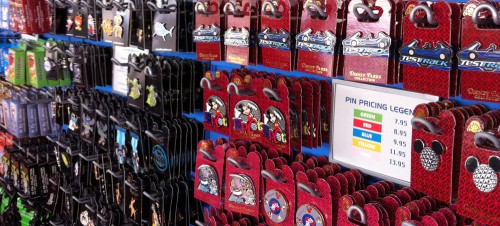
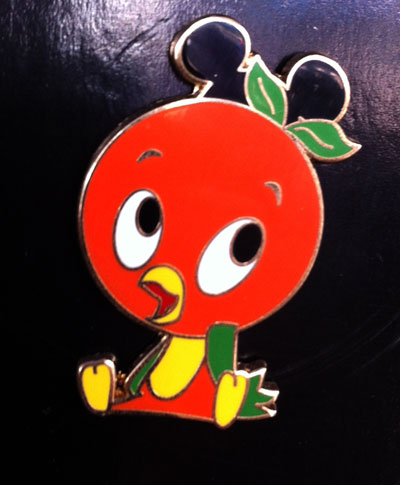
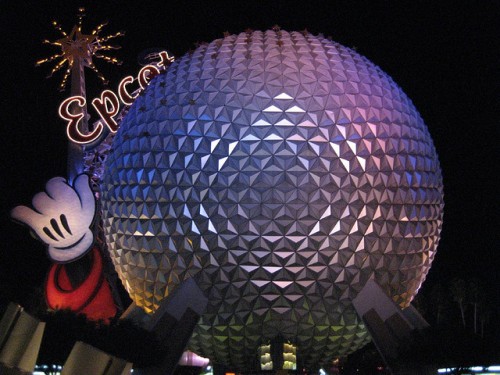
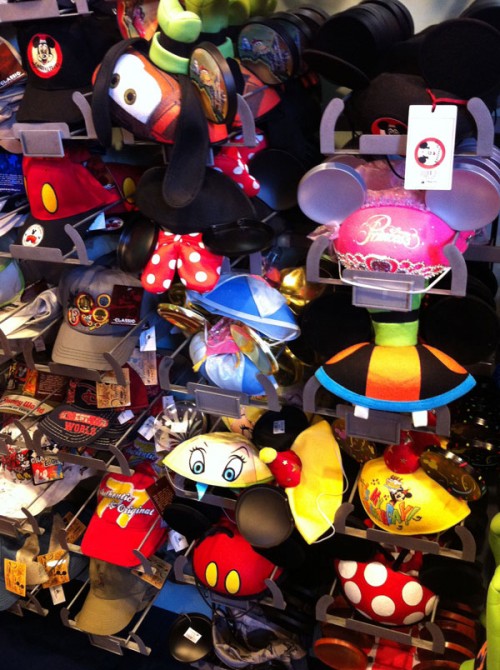
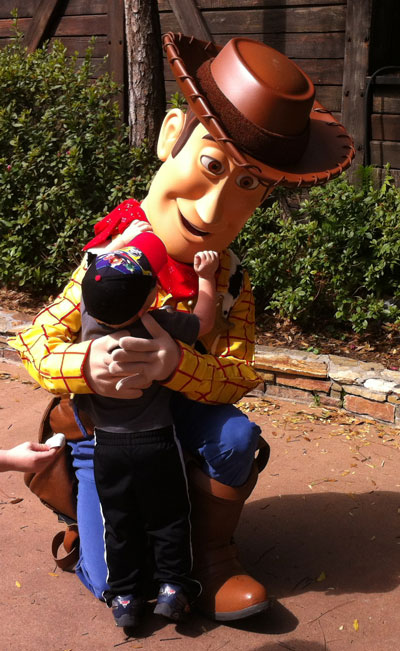
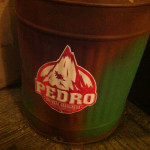


What’s so interesting about the niche markets you discuss here is that three out of seven either directly or indirectly encourage Disney-visitors to return to the parks at a later date. Obviously, DVC is designed to get people to continue coming back to Disney world, but the pins and hats also have created a need to return to Disney at some point in the future. There is little point of buying pins if not to, as you aptly stated, “collect them all”, which directly lends itself to return visits. The same goes for the mouse ears you mentioned. Having been to Disney World upwards of 20 times, I have collected way more than my fair-share of these things. Why not wear the same ones every year, you ask? Because there are simply so many different ones to buy! Why wear the same pair of black ears with my name on the back, when I can have a whole collection of ears in a rainbow of colors and characters. The fact that Disney has been able to create niche markets that not only cause visitors to spend money once, but also create the desire—the emotional need—to spend money over and over and OVER again is honestly brilliant. Well done, Disney.
Sooooo, here’s where you got my goat. I worked the DVC booths for two and a half years, was in Market Research for two years prior to that, and started with Disney in merchandise working a lot of the pin locations. Man oh man, no longer am I a CM but now I feel like I was a peddler :).
Hilarious and well put together post, enjoyed it!
A-B-C. Always Be Closing.
you want to work here? CLOSE!
BUT as an elderly Cast Member once told me as she taught me to make a Reese’s Pieces/fudge/caramel apple in Sweet Spells at Disney’s Hollywood Studios “Inside it’s just a nice wholesome apple!”
TO YOUR HEALTH!
Hong Kong Disneyland does the surveys right. After spending 10 minutes you get the equivalent of $0.13 worth of stickers, door knob hangars and a fan. Some of my favorite souvenirs of my trips there, I will now go out of my way to take a survey.
DVC is mutually beneficial…to the right buyer.
Disney gets a chunk of money up front (or finances buyers at rates upward of 11%) and guarantees itself a steady stream of park guests for decades to come.
The buyer receives accommodations for a fraction of its actual cost for up to 50 years.
I have been a DVC owner for 10 years. My annual payout is about $1300 in dues. For that money, I could book more than 3 weeks per year in a Studio villa (comparable to a standard hotel room) or 11-12 nights in a 700 sq ft One Bedroom villa.
There was a significant up-front investment, but those dollar are amortized over the 50-year life of the contract. And thanks to the healthy resale market for DVC points, I could sell my ownership today and recoup about 90% of my initial payment.
Overall I’m seeing discounts of 65-75% off rack–even more when you factor in the 12.5% resort tax to which DVC owners are not subject.
The ideal DVC buyer is someone who already has plans to visit Disney parks and resorts on a recurring basis. Sure Disney itself is making a lot of money in the process. But their profits and motivations really don’t matter to me–I only care about the very real savings that I’m experiencing.
I’ll admit, some of my comments were a little tongue in cheek. We try not to take anything too seriously here. I think you’re right, that under the right circumstances DVC can be fine for some people. It does seem a little risky in the short term though. You’re tying up a lot of money while banking on the fact that you will do Disney all the time in the years to come, and that you will always want to stay at the premium resorts. I’m not criticizing anyone who does it. My main point was that it definitely fits the bill of a strange thing to be selling in a theme park.
I took to whistling Monty Python’s “Sit on my Face” whenever I saw someone wearing those mouse ears with the “Mickey pants” pattern. Also, I can’t look at those “Mickey pants” apples without hearing Bart Simpson saying “eat my shorts.”
To be fair, I’m not against the PhotoPass as much as other schemes. Amusement parks have had circulating photographers for decades, with higher pressure than the ones at WDW. The PhotoPass photographers will still take pictures with your camera for free, and they come out pretty good. Since they have decent equipment and tripods, the ones they take with their cameras are better than you’d get with your own camera. Since you don’t need to decide right away, you get the time to decide if the quality of the pictures is actually worth the price they charge.
But as for the DVC timeshares, simple logic tells you that you’re likely getting taken for a ride. All of those kiosks, model rooms, staff members, etc. cost Disney in labor or forfeited revenue from pin kiosks that could be in place of DVC kiosks. In order for Disney to absorb those losses, they must make a huge profit when they do make a sale.
What’s funny is I do use PhotoPass all the time. Rarely ever buy anything, but if we’re in a character greeting area, I’ll let them scan my card and snap a few pics just in case they capture one that’s amazing.
It’s so true what you say about the logic of the DVC though. It must be crazy lucrative for them to have all those booths and things. Somebody’s making out like bandits, and I’m not sure it’s the consumer.
My father jumped into the time share when the Boardwalk opened and then bought more for Saratoga. It was a great inventstment back then. Now its starting to get ridiculous considering how much points are. It was one of the best investements he made, especially when he did it. We were going at least 2-3 times a year. I think Disney does the Time Share thing way better than other places, but I guess that is expected.
In spite of the incredulity, I have been sucked in to almost every one of these markets at some point. The only 2 I have really avoided are the pins and the DVC (and I’ve bought my fair share of vinylmations instead of pins, so it’s all good). I think Disney actually does do an amazing job marketing the DVC. It’s low-pressure, unlike all the other time share markets.
I lost a crown while LOOKING at a tray of Disney candy apples in Big Top Souvenirs last December. Tooth is stranger than fiction.
That sounds like a flimsy excuse to get your laughing gas fix.
Truth. Painful as it is.
Two words: vinylmation.
I thought about including Vinylmation also, but it owes so much to the pin trading, I decided to go with the original money black hole.
I was surprised by all the vinylmation on a recent trip as well
“Disney didn’t invent the time share. That idea had been patented decades ago by Satan.”
Awesome. Thanks for saying what we all are thinking. We *are* all thinking it, aren’t we?
This reminds me of when I bought that elliptical machine years ago. “Sure, it’s expensive,” I thought. “But think of all the convenient exercise I’ll be getting!” Six months later, we’re hanging laundry on it. Now magnify that by a hundred with a time share. It’s just really hard to make the math work out. But I do understand there are other reasons why someone might buy into the DVC. Certainly owning a little piece of the Mouse is satisfying in itself.